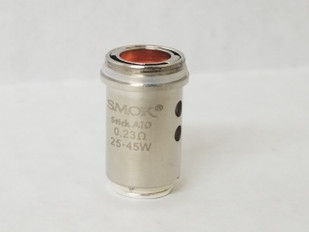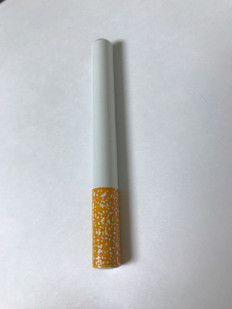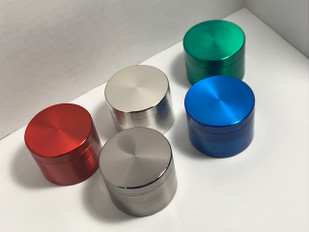- Home
- The Vape Mall Blog
- Everything You Need to Know About Vape Tanks
Everything You Need to Know About Vape Tanks
Posted by on
The vaping industry has come a long way since its inception, but the basic components of these devices are still the same. One of the key components of any vaping setup is the vape tank. For both beginners and seasoned vapers, understanding vape tanks is crucial to getting the most out of your vaping experience.
What is a Vape Tank?
A vape tank is a component of a vaping device that holds the e-liquid and houses the coil, which heats up to produce vapor. Tanks are typically made of glass or plastic and come in various sizes and designs. They are a crucial part of the vaping experience because they determine the flavor and vapor production.
Types of Vape Tanks
1. Clearomizers: Clearomizers are one of the most basic types of vape tanks, ideal for beginners. They are easy to use and maintain. Clearomizers have a clear glass or plastic body, allowing users to see the e-liquid level. They usually come with replaceable coils, making them cost-effective.
2. Sub-Ohm Tanks: Designed for direct lung (DL) vaping, sub-ohm tanks use coils with a resistance of less than 1 ohm. They produce larger clouds of vapor and more intense flavors due to the higher wattage and airflow. These tanks are popular among cloud chasers and those who prefer a more powerful vaping experience.
3. Rebuildable Tank Atomizers (RTAs): RTAs are for advanced users who prefer customizing their vaping experience. They allow users to build their own coils, which can be tailored to individual preferences for flavor and vapor production. RTAs have a deck for coil building and a tank section for holding e-liquid.
4. Rebuildable Dripping Atomizers (RDAs): RDAs are similar to RTAs but do not have a tank section. Instead, users drip e-liquid directly onto the coils and wicks. This method provides intense flavor and vapor but requires frequent dripping. RDAs are favored by experienced vapers and those who enjoy experimenting with different builds.
5. Rebuildable Dripping Tank Atomizers (RDTAs): RDTAs combine the best features of RTAs and RDAs. They have a tank section for holding e-liquid and a dripping section for better flavor. RDTAs are versatile and provide a balance between convenience and performance.
How Do Vape Tanks Work?
Vape tanks work by housing the coil and wick. The wick absorbs the e-liquid from the tank and delivers it to the coil. When the device is activated, the coil heats up, vaporizing the e-liquid absorbed by the wick. The vapor is then inhaled through the mouthpiece.
The key components of a vape tank include:
- Tank Section: Holds the e-liquid.
- Coil: The heating element that vaporizes the e-liquid.
- Wick: Usually made of cotton, it absorbs the e-liquid and delivers it to the coil.
- Airflow Control: Allows users to adjust the amount of air that flows through the tank, affecting the vapor and flavor.
- Mouthpiece: The part through which the user inhales the vapor.
Tips for Maintaining Your Vape Tank
Proper maintenance of your vape tank is essential to ensure it performs well and lasts longer. Here are some tips:
1. Regular Cleaning: Clean your tank regularly to prevent residue buildup, which can affect flavor and performance. Disassemble the tank and rinse all parts with warm water. Use a cotton swab or brush to clean hard-to-reach areas. Let all parts dry completely before reassembling.
2. Replace Coils: Coils have a limited lifespan and need to be replaced periodically. Signs that your coil needs replacing include a burnt taste, reduced vapor production, or a gurgling sound. Always prime new coils by soaking them in e-liquid before use.
3. Check for Leaks: Leaks can be caused by improper assembly, worn-out O-rings, or overfilling. Ensure all parts are tightly screwed together and replace any damaged O-rings. Avoid overfilling the tank, as this can cause e-liquid to leak out through the airflow holes.
4. Adjust Airflow: Experiment with the airflow settings to find the balance between flavor and vapor production that suits your preference. Closing the airflow can increase flavor intensity, while opening it can produce larger vapor clouds.
5. Use the Right E-Liquid: High VG (vegetable glycerin) e-liquids are thicker and work best with sub-ohm tanks, while high PG (propylene glycol) e-liquids are thinner and better suited for standard tanks. Using the right e-liquid ensures optimal performance and prevents issues like dry hits or leaking.
Vape tanks play a crucial role in the vaping experience, influencing both flavor and vapor production. Whether you are a beginner or an advanced user, understanding the different types of tanks and how they work can help you choose the right one for your needs. Proper maintenance and care of your vape tank will ensure it performs well and lasts longer, providing you with a satisfying vaping experience.
Remember to experiment with different tanks, coils, and e-liquids to find what works best for you. Happy vaping!
 Loading... Please wait...
Loading... Please wait...




















